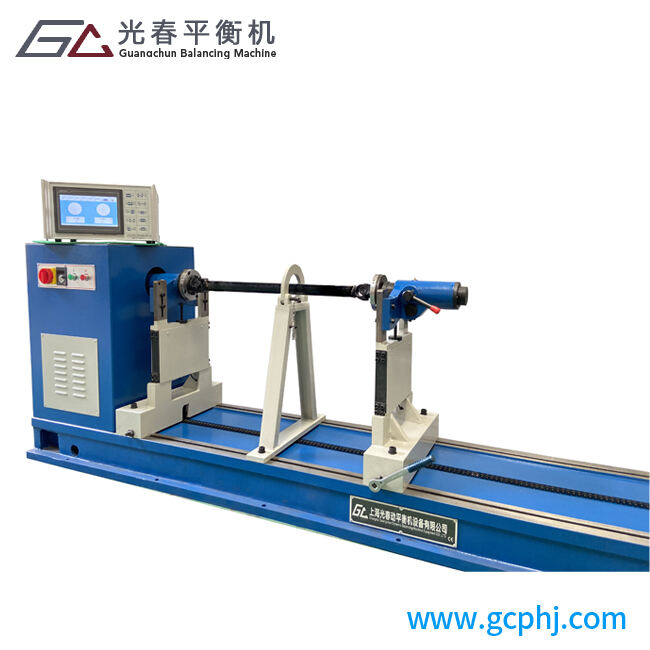Understanding Modern Driveshaft Balancing Technology
The automotive and industrial sectors have witnessed remarkable advancements in driveshaft balancing technology over recent years. Modern driveshaft balancing machines represent the cornerstone of precision engineering, ensuring optimal performance and longevity of vehicles and industrial equipment. These sophisticated devices combine mechanical precision with cutting-edge digital technology to deliver unprecedented accuracy in balancing operations.
The significance of proper driveshaft balancing cannot be overstated. Unbalanced driveshafts can lead to severe vibrations, accelerated wear, and potential system failures. By investing in high-quality driveshaft balancing machines, manufacturers and maintenance facilities can ensure superior product quality while minimizing downtime and repair costs.
Essential Features of Professional Balancing Equipment
Advanced Measurement Systems
Contemporary driveshaft balancing machines incorporate sophisticated measurement systems that provide precise readings of imbalance magnitude and location. These systems typically utilize high-sensitivity sensors and advanced algorithms to detect even minimal irregularities in driveshaft rotation. The integration of digital measuring technology ensures consistent accuracy across multiple balancing sessions, making it an indispensable feature for professional operations.
The most effective measurement systems also offer real-time monitoring capabilities, allowing operators to observe the balancing process as it occurs. This immediate feedback mechanism enables quick adjustments and optimizations, significantly reducing the time required for each balancing operation.
Automated Control Systems
Modern driveshaft balancing machines feature comprehensive automated control systems that streamline the entire balancing process. These systems manage everything from initial setup to final verification, reducing the potential for human error while increasing operational efficiency. The automation extends to calibration procedures, data logging, and report generation, providing a complete solution for quality control requirements.
The interface design of these control systems plays a crucial role in their effectiveness. User-friendly touchscreen displays and intuitive software make it easier for operators to navigate complex balancing procedures while maintaining precise control over all parameters.

Performance Specifications and Capabilities
Speed Range and Capacity
The operational capabilities of driveshaft balancing machines vary significantly based on their design and intended application. Industrial-grade machines typically offer extensive speed ranges, from as low as 100 RPM to well over 3,000 RPM, accommodating different driveshaft specifications and balancing requirements. The capacity to handle various shaft sizes and weights is equally important, with premium machines capable of balancing components weighing from a few pounds to several tons.
When evaluating speed range and capacity, it's essential to consider not just current requirements but potential future needs. Investing in a machine with broader capabilities can prove cost-effective in the long run, especially for growing operations.
Accuracy and Repeatability
The hallmark of superior driveshaft balancing machines lies in their ability to deliver consistent, accurate results. Industry-leading equipment typically achieves accuracy levels of 0.1 gram-inches or better, ensuring optimal balance in even the most demanding applications. Repeatability is equally crucial, as it ensures consistent results across multiple balancing sessions.
Modern machines incorporate various features to maintain this high level of accuracy, including automatic compensation for environmental factors and built-in calibration routines. These capabilities ensure reliable performance even in challenging industrial environments.
Integration and Connectivity Features
Data Management Systems
Today's driveshaft balancing machines are increasingly equipped with comprehensive data management capabilities. These systems allow for detailed tracking of balancing operations, storage of component specifications, and generation of detailed reports. The ability to maintain historical data proves invaluable for quality control and maintenance planning.
Advanced machines offer cloud connectivity options, enabling remote monitoring and data access. This feature proves particularly valuable for operations with multiple facilities or those requiring centralized oversight of balancing operations.
Network Integration
The integration capabilities of modern driveshaft balancing machines extend beyond basic data management. Many systems can now connect directly with facility management software, production planning systems, and quality control databases. This interconnectivity streamlines workflow and ensures consistent documentation across all operational aspects.
Network integration also facilitates remote diagnostics and software updates, reducing maintenance downtime and ensuring the equipment remains current with the latest technological improvements.
Maintenance and Support Considerations
Preventive Maintenance Requirements
The longevity and reliability of driveshaft balancing machines depend significantly on proper maintenance protocols. Leading manufacturers provide detailed maintenance schedules and guidelines, typically including daily checks, periodic calibration requirements, and component replacement intervals. Following these recommendations ensures consistent performance and prevents unexpected downtime.
Training programs for maintenance personnel should be considered as part of the overall investment. Proper understanding of maintenance procedures and early problem detection can significantly extend equipment life and maintain optimal performance.
Technical Support and Service Network
Access to reliable technical support and service represents a crucial factor in selecting driveshaft balancing machines. Leading manufacturers maintain extensive service networks, offering rapid response times and comprehensive support options. The availability of local service technicians and spare parts inventory can significantly impact operational continuity.
Consider manufacturers offering remote diagnostic capabilities and 24/7 technical support. These features can prove invaluable in minimizing downtime and resolving issues quickly.
Frequently Asked Questions
What factors most influence the accuracy of driveshaft balancing machines?
The accuracy of driveshaft balancing machines is primarily influenced by sensor quality, mechanical precision of the mounting system, and environmental conditions such as temperature stability and vibration isolation. Regular calibration and proper maintenance also play crucial roles in maintaining accuracy.
How often should driveshaft balancing machines be calibrated?
Professional driveshaft balancing machines typically require calibration every six months to one year, depending on usage intensity and environmental conditions. However, some operations may require more frequent calibration based on quality control requirements or specific industry standards.
What are the key differences between manual and automatic balancing machines?
Automatic driveshaft balancing machines offer higher precision, faster operation, and reduced operator dependency compared to manual systems. They typically include features like automatic measurement cycles, computer-controlled weight placement calculations, and integrated quality control systems, while manual machines rely more heavily on operator expertise and judgment.




